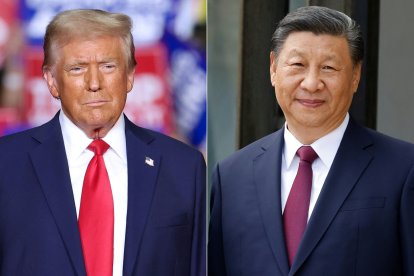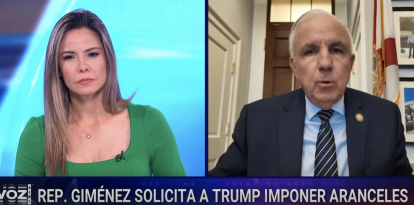How Trump's tariffs on steel and aluminum are a blow to China
The president continues to use tariffs to reshape the U.S. trade system and also as a political strategy.

Donald Trump and Xi Jinping
The president signed two official proclamations Monday afternoon imposing 25% tariffs on all steel and aluminum imports. The decision is part of his campaign promise to restructure the U.S. trade system, seeking to protect the working class employed in these industries, but it is also a political move intended to hurt China.
Although most of the aluminum and steel imports come from countries such as Canada, Brazil and Mexico, and not directly from China, this measure in the background also seeks to hit the communist regime hard.
China dominates the global steel and aluminum industry. In 2023, its aluminum production was a record 41 million metric tons, which is more than half of the world's aluminum production. China is also the world's leading steel producer. In 2024, it produced more than 50% of total world production of steel, with around one billion metric tons.
Although most of its aluminum and steel production is used within China, its exports have increased recently, largely because its domestic economy is facing difficult times. Much of this aluminum and steel, usually of low cost and poor quality, is exported precisely to countries such as Canada and Mexico, which are two of the main exporters of these metals to the United States.
So Mexico and Canada consume China's steel and aluminum and end up exporting a large part of their production of these metals to the United States. That is why producers and labor unions in the United States have raised their criticism against China's increased exports of these two metals, even though their products do not directly reach our country.
These tariffs of 25% on steel and aluminum are in addition to other tariffs that directly affect China. In his second week in the White House, Trump imposed tariffs of 10% on all imports from China, in addition to the taxes already in force against the regime. The Biden administration even raised duties on products made of steel and aluminum to 25%. Following the announcement of the 10% duties last week, China reacted by imposing tariffs of between 10% and 15% on liquefied natural gas, coal, and agricultural machinery among other U.S. products.
Tariffs on steel and aluminum are a measure that was also used by Trump in his first term, and these correspond to his promise to protect the working class of the industry that is affected by imports. Although China does not export these metals to the United States, aluminum and steel manufacturers have generally complained for quite some time that China's sky-high production affects prices internationally and floods markets for their products. Meanwhile, critics of the tariffs warn of rising prices and how protectionism can affect consumers in general.
In the few days he has been in office, Trump has used tariffs to the fullest, sometimes as a tool to push for and win concessions concerning drugs and migration, but other times directly as an end goal to change the trade structure. Polls show that the majority of Americans agree with tariffs on China, and beyond anyone's position on the use of tariffs, Trump is executing what he promised in his campaign, there are no surprises here.
RECOMMENDATION





















